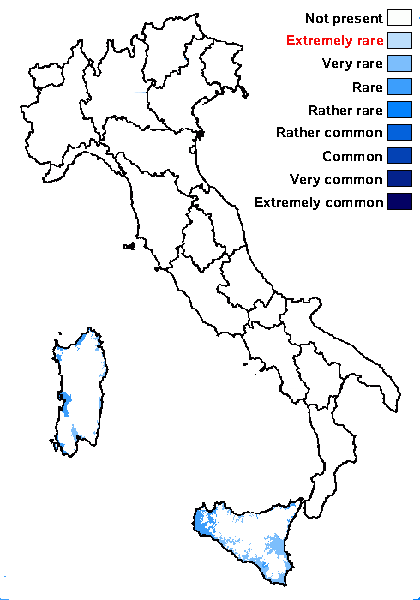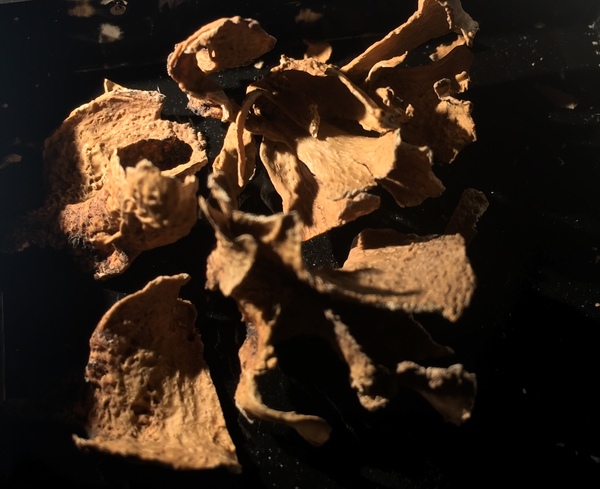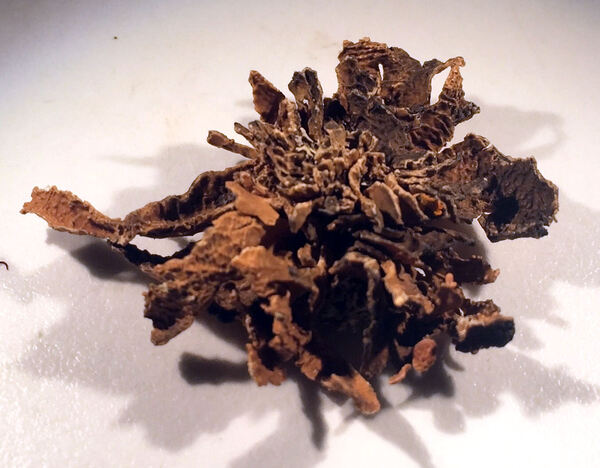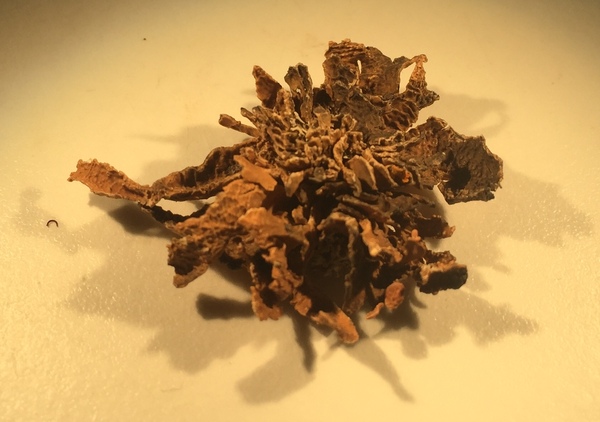Ramalina rosacea (A. Massal.) Hepp
Flecht. Eur.: nr. 356, 1857. Basionym: Ramalina polymorpha var. rosacea Schaer. ex A. Massal. - Sched. Crit., 11: 157, 1856.
Synonyms: Ramalina bourgaeana var. morisiana Bagl.; Ramalina bourgeana auct. ital. p.p.
Distribution: C - Sar. S - Si.
Description: Thallus fruticose, consisting of greenish to greenish grey, 0.2-5 cm wide and 1-8 cm long, cuneate, rather rigid, smooth or weakly reticulately ridged, simple or sparingly branched, erect laciniae forming rosettes or tufts, without pseudocyphellae. Cortex 2-layered, the outer part paraplectenchymatous, the inner part of discontinuous cartilaginous chondroid strands; medulla white, compact. Apothecia lecanorine, to 1 cm across, mostly marginal, with a concave to flat, greenish disc and a smooth to weakly reticulately ridged, thick thalline margin. Epithecium pale brownish-olive; hymenium and hypothecium colourless; paraphyses thick-walled, richly branched in upper part. Asci 8-spored, the apical dome K/I+ dark blue with a pale, conical-pointed apical cushion (axial mass), the wall I-, but the thin outer gel I+ blue, Bacidia-type. Ascospores 1-septate, hyaline, ellipsoid, slightly curved, 10-14 x 3-5 μm. Pycnidia marginal and laminal, with pale ostioles. Conidia short-bacilliform. Photobiont chlorococcoid. Spot tests: cortex K-, C-, KC+ pale yellow, P-; medulla K+ (often faintly) yellow sometimes turning red, C-, KC-, P+ yellow-orange, UV-. Chemistry: cortex with usnic acid; medulla with bourgeanic, norstictic, stictic and cryptostictic acids, PCR-1 and triterpenes.Note: a Mediterranean species found on coastal siliceous rocks subject to maritime winds; related to R. bourgaeana, but chemically different.
Growth form: Fruticose
Substrata: rocks
Photobiont: green algae other than Trentepohlia
Reproductive strategy: mainly sexual
Poorly known taxon in need of further study
Taxon bound to maritime-coastal situations
Commonnes-rarity: (info)
Alpine belt: absent
Subalpine belt: absent
Oromediterranean belt: absent
Montane belt: absent
Submediterranean belt: absent
Padanian area: absent
Humid submediterranean belt: absent
Humid mediterranean belt: rare
Dry mediterranean belt: very rare

Predictive model
Herbarium samples
Growth form: Fruticose
Substrata: rocks
Photobiont: green algae other than Trentepohlia
Reproductive strategy: mainly sexual
Poorly known taxon in need of further study
Taxon bound to maritime-coastal situations
Commonnes-rarity: (info)
Alpine belt: absent
Subalpine belt: absent
Oromediterranean belt: absent
Montane belt: absent
Submediterranean belt: absent
Padanian area: absent
Humid submediterranean belt: absent
Humid mediterranean belt: rare
Dry mediterranean belt: very rare

Predictive model
| Herbarium samples |
 INDEX FUNGORUM
INDEX FUNGORUM
 GBIF
GBIF




